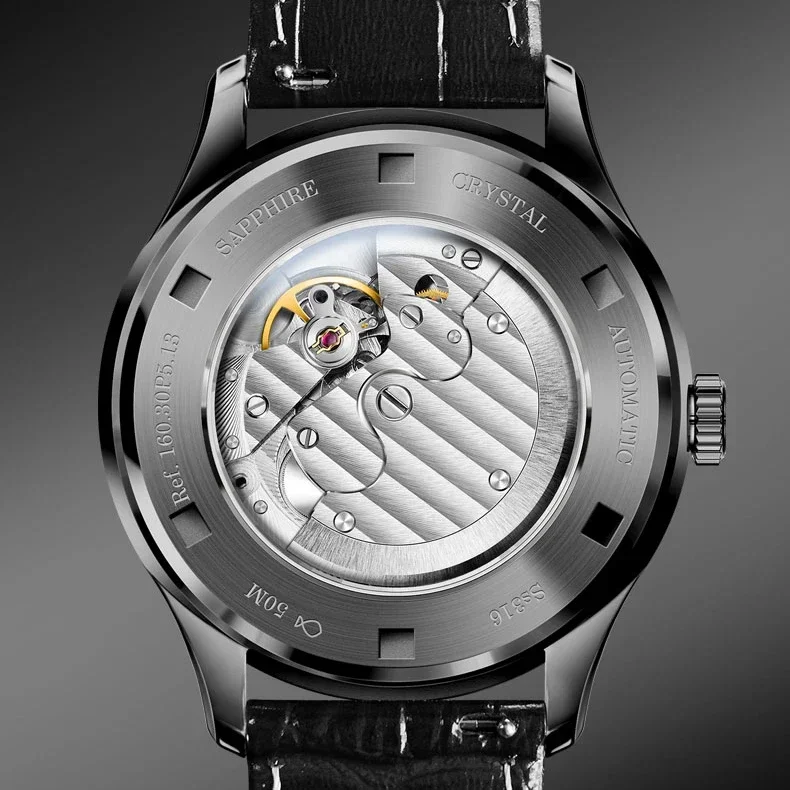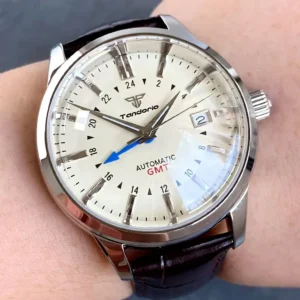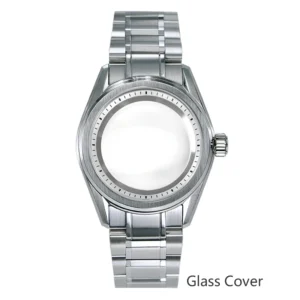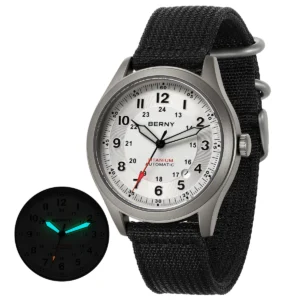Introduction: Why Multi-Time Zone Watches Matter
In our increasingly connected world, keeping track of multiple time zones has become essential for many professionals and travelers. Whether you’re coordinating international business calls, connecting with family abroad, or frequently crossing time zones, a watch that displays multiple time zones can be an invaluable tool.
Two primary solutions have emerged in the world of horology: GMT watches and dual time watches. Though they serve similar purposes, they operate quite differently, with distinct mechanisms and displays that cater to different preferences and needs.
Understanding these differences isn’t just technical trivia—it’s practical knowledge that can help you choose the right timepiece for your lifestyle. The development of these specialized watches reflects the fascinating history of dive watch engineering and other purpose-built timepieces that solve specific problems.
In this comprehensive guide, we’ll explore what sets GMT and dual time watches apart, how each works, and which might be better suited to your specific needs as a traveler or professional.
The Evolution of Multi-Time Zone Watches: A Brief History
The need to track multiple time zones emerged alongside globalization and the growth of international travel. As steamships gave way to airplanes and travel times decreased, the need for efficient time management across global boundaries became increasingly important.
In the 1950s, the golden age of commercial aviation began, and with it came a specific need from pilots. Pan American Airways approached Rolex with a problem: pilots needed a watch that could simultaneously display two time zones. The result was the GMT-Master, introduced in 1954, featuring an additional 24-hour hand and a rotating bezel that allowed pilots to track Greenwich Mean Time (the reference time for aviation) along with their local time.
The development of these specialized timing functions parallels the evolution of dive watch technology, with each innovation addressing specific professional needs. Dual time watches took a different approach, often using sub-dials or additional hour hands to display a second time zone, focusing on simplicity and clarity rather than the technical precision of GMT models.
As international business expanded in the latter half of the 20th century, these watches evolved from professional tools to everyday essentials for globe-trotting executives. The timeline of diving watch innovations mirrors this progression, showing how specialized timepieces gradually became mainstream accessories while maintaining their core functionality.
GMT Watches Explained: The Aviator’s Choice
A GMT watch is defined by its ability to display two (or more) time zones simultaneously using a distinctive 24-hour hand. This additional hand makes one complete revolution around the dial every 24 hours—half the speed of the standard hour hand.
The name “GMT” refers to Greenwich Mean Time, the standard time at the Royal Observatory in Greenwich, London, which served as the world’s time standard for many years (now replaced by Coordinated Universal Time or UTC, though the GMT name persists in watchmaking).
Key features of a GMT watch include:
- A standard 12-hour display with hour, minute, and usually seconds hands
- An additional 24-hour hand, often distinguished by color or shape
- A 24-hour scale, either on the dial itself or on the bezel
- The ability to read two time zones at a glance
- Clear AM/PM differentiation for the second time zone thanks to the 24-hour scale
The 24-hour format eliminates any confusion about whether it’s day or night in your reference time zone—a crucial feature for pilots and international travelers who might lose track crossing multiple time zones.
Our GMT automatic watches collection showcases various interpretations of this useful complication, while specialized GMT pilot watches retain the aviation heritage that birthed this functionality.
The GMT Watch Mechanism: How It Works
GMT watches operate through a specialized movement that drives the additional 24-hour hand. There are two primary types of GMT mechanisms, each with different functionality:
“True GMT” or “Traveler’s GMT”:
– Features an independently adjustable local hour hand
– Allows you to adjust local time in one-hour increments when changing time zones
– The 24-hour GMT hand remains fixed to your reference time (often home time)
– The date changes with the local hour hand, ensuring proper synchronization
“Caller GMT” or “Office GMT”:
– The GMT hand is independently adjustable
– Local time remains fixed when setting the second time zone
– Better for tracking a second time zone from home
– Usually more affordable due to simpler movement architecture

Setting a True GMT watch for travel typically follows these steps:
1. Set the 24-hour hand to your reference time (home)
2. When arriving in a new time zone, pull the crown to the GMT position
3. Adjust the local hour hand forward or backward in one-hour increments
4. The date will adjust accordingly when crossing midnight
5. The 24-hour hand continues to display your reference time
Many GMT watches also feature a rotating 24-hour bezel, which allows for tracking a third time zone. Our ultimate guide to GMT functions in tool watches explores these capabilities in greater detail.
For the adventurous, GMT dive watches combine multiple time zone tracking with underwater capabilities, creating versatile timepieces for travelers who enjoy water sports.
Dual Time Watches Decoded: Elegant Simplicity
Dual time watches take a different approach to displaying multiple time zones. Rather than using a 24-hour hand, they typically provide a second, complete time display for the additional time zone.
This category encompasses a wide variety of implementations, including:
- A sub-dial with a separate hour and minute hand for the second time zone
- Two complete sets of hands operating from the center of the dial
- A digital display for the second time zone alongside an analog main display
- An aperture window showing digital or jumping hour numerals
Unlike GMT watches, many dual time watches display the second time zone in a 12-hour format. To compensate for the potential AM/PM confusion, they often include day/night indicators for the secondary time zone.
This approach offers a straightforward, intuitive reading of both time zones, with many enthusiasts appreciating the symmetry and balance dual time watches often achieve in their dial designs. Many automatic pilot watches incorporate dual time functionality, given the historical importance of time zone tracking for aviation professionals.
Dual Time Watch Functionality: Setting and Reading
Setting a dual time watch typically involves a separate mechanism for adjusting the secondary time display. Common adjustment methods include:
- A secondary crown (often at 10 o’clock position)
- Pushers on the case sides to advance or reverse the second time zone
- A specialized crown position for adjusting the second time display
- Crown-activated jump hour features for quick adjustments
Reading a dual time watch is generally intuitive, as you’re simply looking at two separate time displays. This directness is part of the appeal for many users—there’s no need to translate between 12-hour and 24-hour formats.
The user experience varies significantly between different dual time implementations. Some designs prioritize aesthetics, integrating the second time zone subtly into the overall design. Others emphasize practicality, making the second time zone as legible as possible for quick reference.
Many dual time watches incorporate additional complications that complement their travel-oriented nature, including date displays, power reserve indicators, and sometimes even calendar functions. Mastering timezone complications in pilot and travel watches requires understanding these various approaches and selecting the one that best suits your needs.
Head-to-Head: GMT vs. Dual Time – Key Differences
When comparing GMT and dual time watches directly, several key differences emerge:
| Feature | GMT Watch | Dual Time Watch |
|---|---|---|
| Display Method | Single dial with additional 24-hour hand | Often two separate displays or sub-dials |
| Time Scale | 24-hour scale for second time zone | Usually 12-hour scale for second time zone |
| AM/PM Indication | Inherent in 24-hour display | Often requires additional day/night indicator |
| Adjustment Mechanism | Often features independent hour hand | Typically uses separate controls for second time zone |
| Third Time Zone | Possible with rotating bezel | Rarely available |
| Visual Appearance | Technical, tool-watch aesthetic | Often more symmetrical or dressy |
| Typical Use Case | Pilots, frequent international travelers | Business travelers, international professionals |
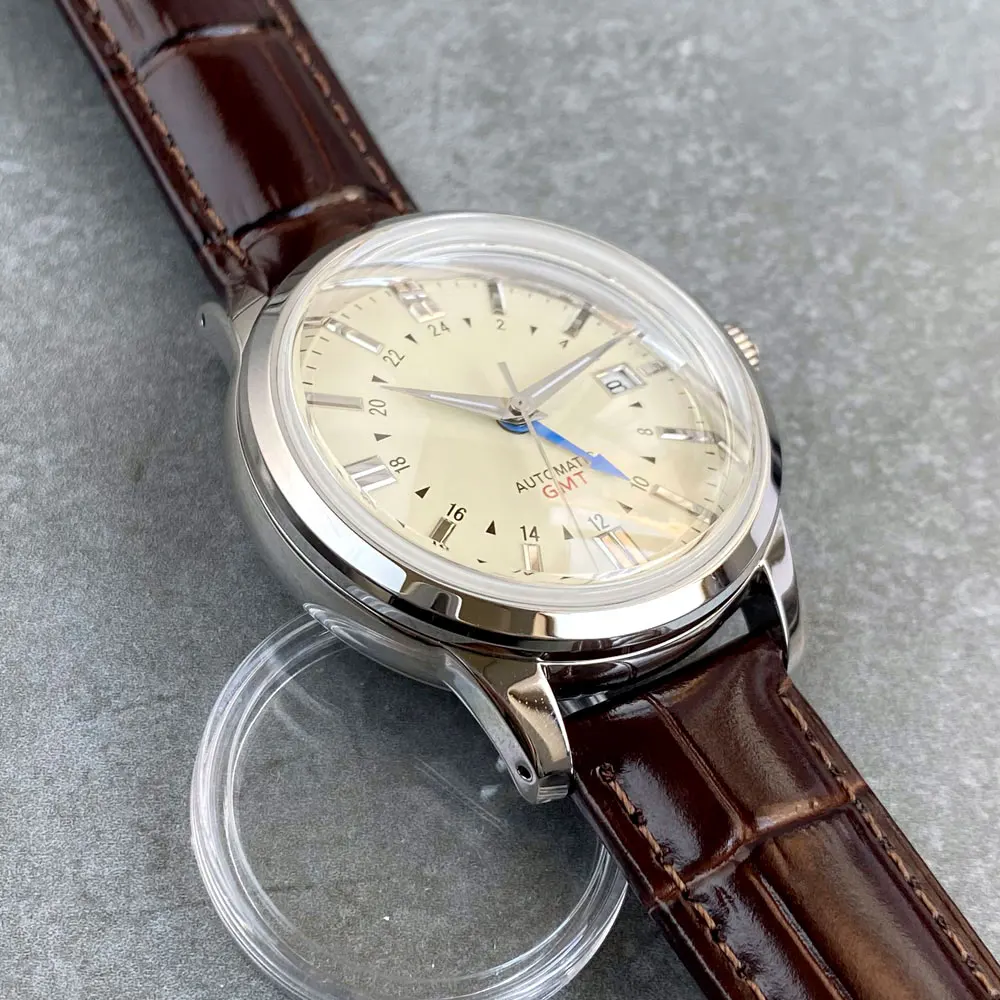
The most fundamental difference lies in how they display the second time zone. GMT watches use a 24-hour hand pointing to a 24-hour scale, while dual time watches typically show a complete second time display, often in 12-hour format.
This creates different visual experiences and learning curves. GMT watches require the user to become comfortable reading a 24-hour scale, while dual time watches offer a more familiar reading experience but might require checking a day/night indicator to confirm AM/PM.
Practical Applications: Which Watch Type Suits Your Needs?
Choosing between a GMT and dual time watch depends largely on your specific travel patterns and preferences:
Consider a GMT watch if:
– You frequently travel across multiple time zones
– You need to track UTC/GMT for professional reasons
– You appreciate the ability to track a third time zone
– You want a watch with aviation heritage and tool watch aesthetics
– You prefer having AM/PM clarity without checking indicators
Consider a dual time watch if:
– You primarily need to track just two specific time zones
– You find 12-hour formats more intuitive and easier to read
– You prefer a more symmetrical or dressy watch appearance
– You value straightforward operation over technical capabilities
– You want a clearer, separate display for each time zone
For instance, a business executive regularly traveling between New York and London might appreciate a GMT watch’s ability to quickly adjust the local time while maintaining home time reference. Meanwhile, someone who simply needs to know when it’s appropriate to call the home office might prefer the clarity of a dual time display.
Understanding GMT complications in dive watches and other specialized timepieces can help you make a more informed decision based on your specific needs.
Automatic Chronograph Watches, Chronograph Pilot Watches
Price range: $233.36 through $237.58 Select options This product has multiple variants. The options may be chosen on the product pageClassic Automatic Dress Watches, GMT Automatic Watches, GMT Pilot Watches
Price range: $1,240.86 through $1,463.33 Select options This product has multiple variants. The options may be chosen on the product pageClassic Automatic Dress Watches, GMT Automatic Watches, GMT Dive Watches
Price range: $468.93 through $552.94 Select options This product has multiple variants. The options may be chosen on the product pageClassic Pilot Watches, Military Inspired Automatic Watches
$561.00 Select options This product has multiple variants. The options may be chosen on the product pageGMT Automatic Watches, Unique Automatic Watches
$420.10 Select options This product has multiple variants. The options may be chosen on the product pageClassic Field Watches, Classic Pilot Watches, Rugged Automatic Watches, Titanium Automatic Watches
Price range: $425.24 through $496.28 Select options This product has multiple variants. The options may be chosen on the product page
Beyond the Basics: Advanced GMT and Dual Time Features
Premium watches in both categories often include enhanced features that improve functionality and user experience:
- Jumping hour mechanisms: Allow precise time zone adjustments without stopping the watch
- Bidirectional bezels: Enable easier adjustments when traveling eastward
- Quickset functions: Provide rapid adjustments of specific hands
- Multiple crowns or pushers: Offer more intuitive control over different functions
- Advanced day/night indicators: Use colored sectors, small apertures, or sun/moon symbols
- Independent seconds reset: Allows perfect synchronization when setting multiple time zones
These advanced features typically appear in higher-end models and enhance the practicality of multi-time zone watches. The ability to use a GMT watch while diving demonstrates how these specialized tools can serve multiple purposes when properly designed.
Supplemental Content: World Timers and Other Alternatives
Beyond GMT and dual time watches, several other solutions exist for tracking multiple time zones:
World Timer watches display all 24 major time zones simultaneously, often via a rotating 24-hour ring and a cities disk. These are the most comprehensive (and complex) solution for global time tracking.
UTC watches focus specifically on tracking Universal Coordinated Time alongside local time, often with specialized displays for this scientific time standard.
Digital watches and smartwatches offer their own approaches to time zone tracking, often with simple interface changes rather than mechanical solutions. They sacrifice horological tradition for ease of use and additional features.
Each solution serves different needs, with GMT and dual time watches representing the most popular mechanical approaches. More information about various timezone tracking methods can be found in our guide to understanding GMT and world time watches.
FAQs: Common Questions About Multi-Time Zone Watches
Is a GMT watch technically a dual time watch?
Yes, in the sense that both display two time zones. However, “dual time” typically refers specifically to watches with two separate time displays rather than the GMT approach using a 24-hour hand.
Can I track more than two time zones with these watches?
GMT watches with rotating bezels can track three time zones. Most dual time watches are limited to two time zones, though some complex models offer additional capabilities.
Which is easier to read at a glance?
Many find dual time watches more intuitive since they often use familiar 12-hour formats for both time zones. GMT watches require familiarity with reading a 24-hour scale.
Are there specific movement requirements for GMT vs. dual time?
Yes. GMT watches require specialized movements with 24-hour gearing for the GMT hand. True GMT watches need further complexity for the independent hour hand. Dual time watches require mechanisms to power and adjust separate time displays.

Do digital watches offer the same functionality?
Digital watches can display multiple time zones, often with greater ease of adjustment, but lack the mechanical craftsmanship and aesthetic appeal that draw many enthusiasts to traditional GMT and dual time watches.
How does daylight saving time affect these watch types?
Both watch types require manual adjustment for daylight saving time changes. A true GMT watch allows you to adjust the local time without disturbing the reference time, which can be convenient during DST changes.
Making Your Choice: Final Considerations
When deciding between GMT and dual time watches, consider these key factors:
- Readability preference: Do you find 24-hour or 12-hour formats more intuitive?
- Travel patterns: How many time zones do you typically need to track?
- Aesthetic preference: Do you prefer the technical look of a GMT or the often more balanced appearance of dual time displays?
- Functionality needs: Do you value the potential third time zone tracking of a GMT watch?
- Setting convenience: Consider which adjustment mechanism feels more natural to you
Both GMT and dual time watches represent elegant solutions to the challenge of tracking multiple time zones. Each has distinct advantages that make them suitable for different users and situations. The best choice ultimately depends on your personal preferences, travel needs, and how you interact with your timepiece.
At Sharp Aspect, we appreciate the engineering ingenuity behind both approaches, recognizing that the perfect travel watch combines technical capability with personal comfort and style preferences.

